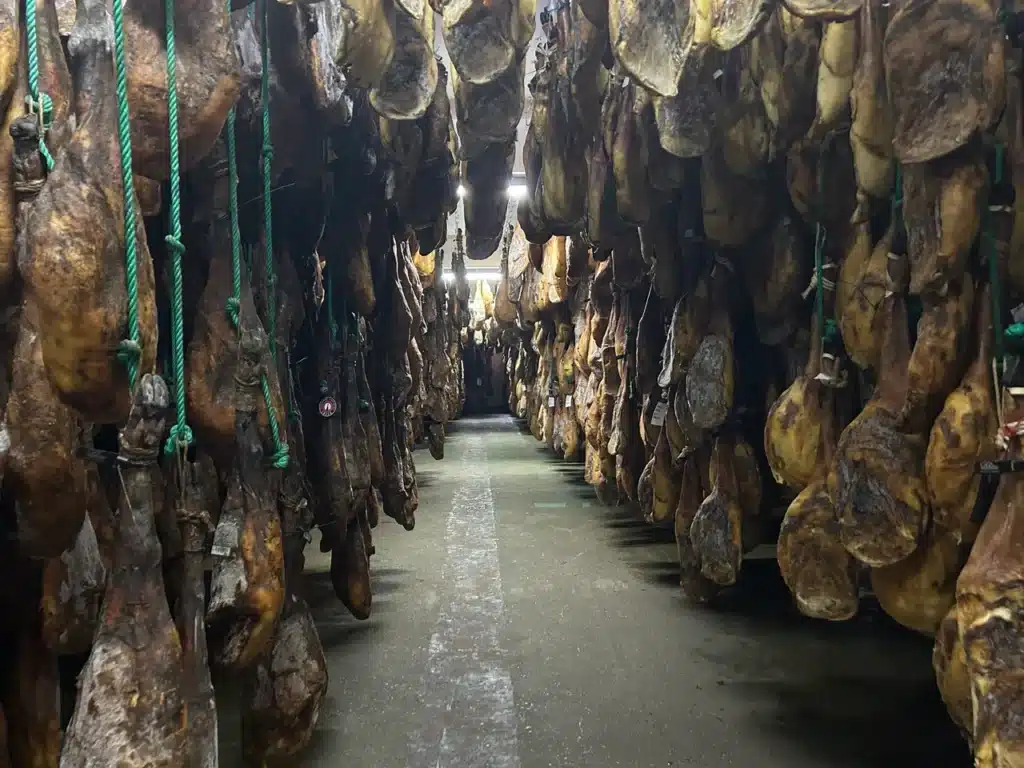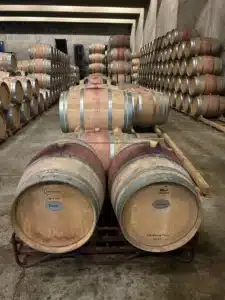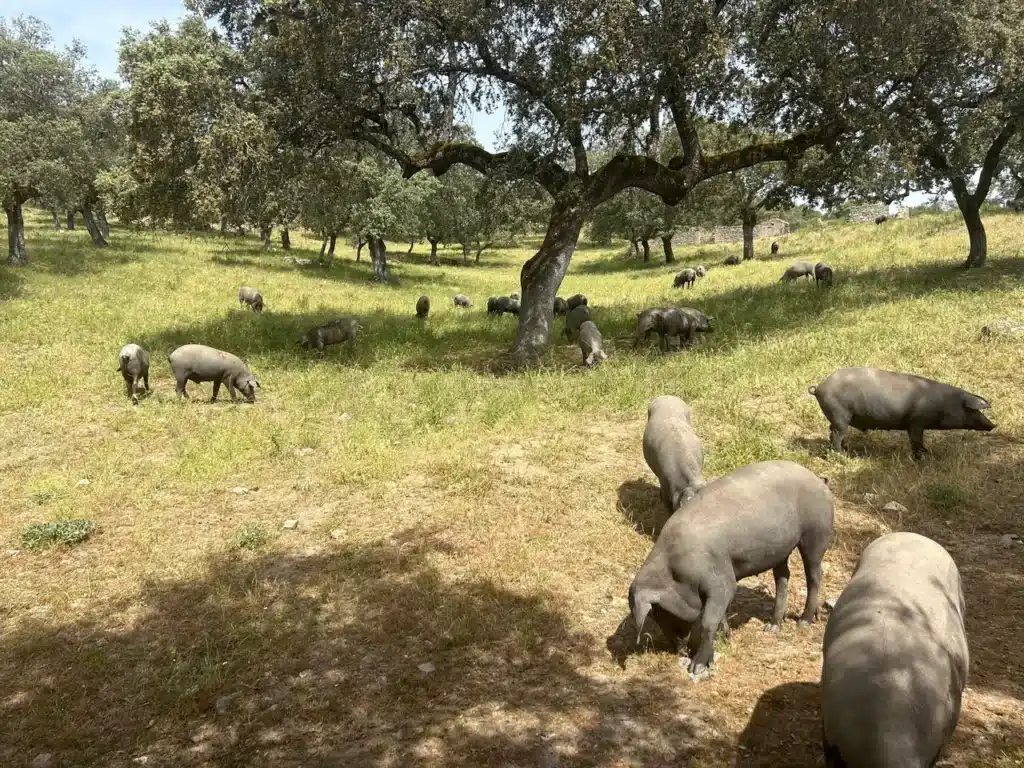 Like wines, Iberian ham (jamón ibérico) has a denomination of origin (DOP) system that includes four distinct regions — Guijuelo, Jabugo, Dehesa de Extremadura and Los Pedroches. We visited a dehesa in Los Pedroches where pigs and cattle are raised in a free-range environment. Later we visited the Ibesa factory where the hams and shoulders are cured and aged. From piglet to plate takes about 5 years.
Like wines, Iberian ham (jamón ibérico) has a denomination of origin (DOP) system that includes four distinct regions — Guijuelo, Jabugo, Dehesa de Extremadura and Los Pedroches. We visited a dehesa in Los Pedroches where pigs and cattle are raised in a free-range environment. Later we visited the Ibesa factory where the hams and shoulders are cured and aged. From piglet to plate takes about 5 years.
The pigs in the photo to the left weigh about 130 pounds. They will reach a weight of 350 pounds by the time they will go to slaughter in winter. During autumn, they will eat a diet that is exclusively the acorns from the cork oaks on the property. This particular dehesa has 200 pigs on 625 acres. Not exactly like those infamous pig farms in Eastern North Carolina or Iowa.
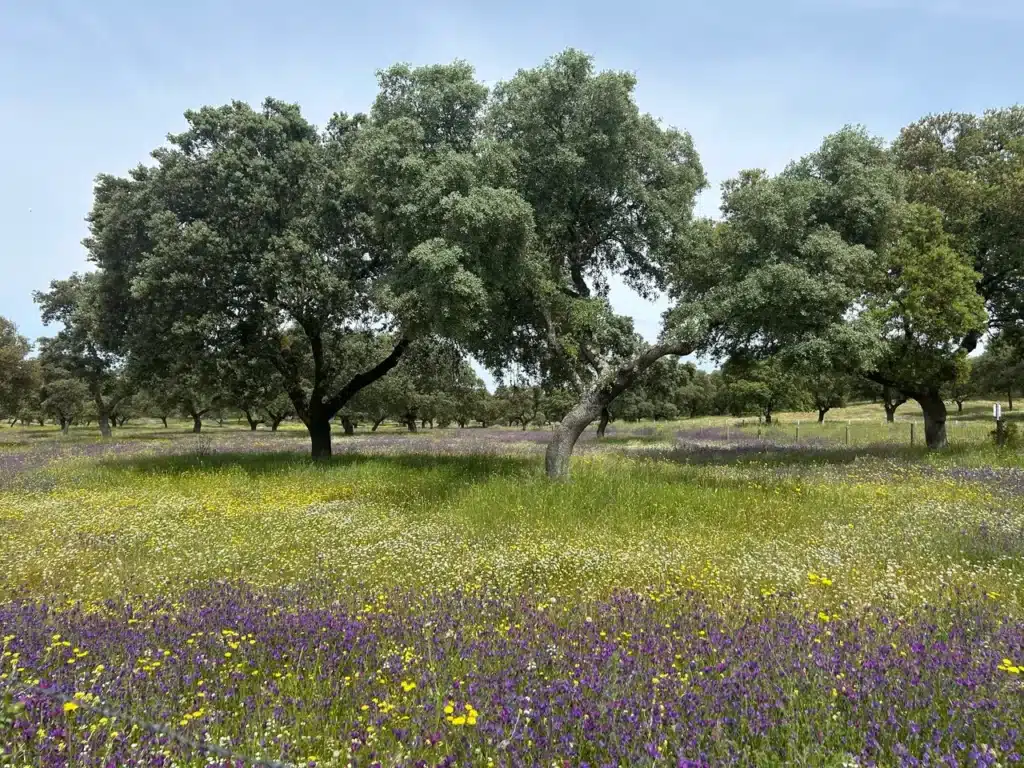
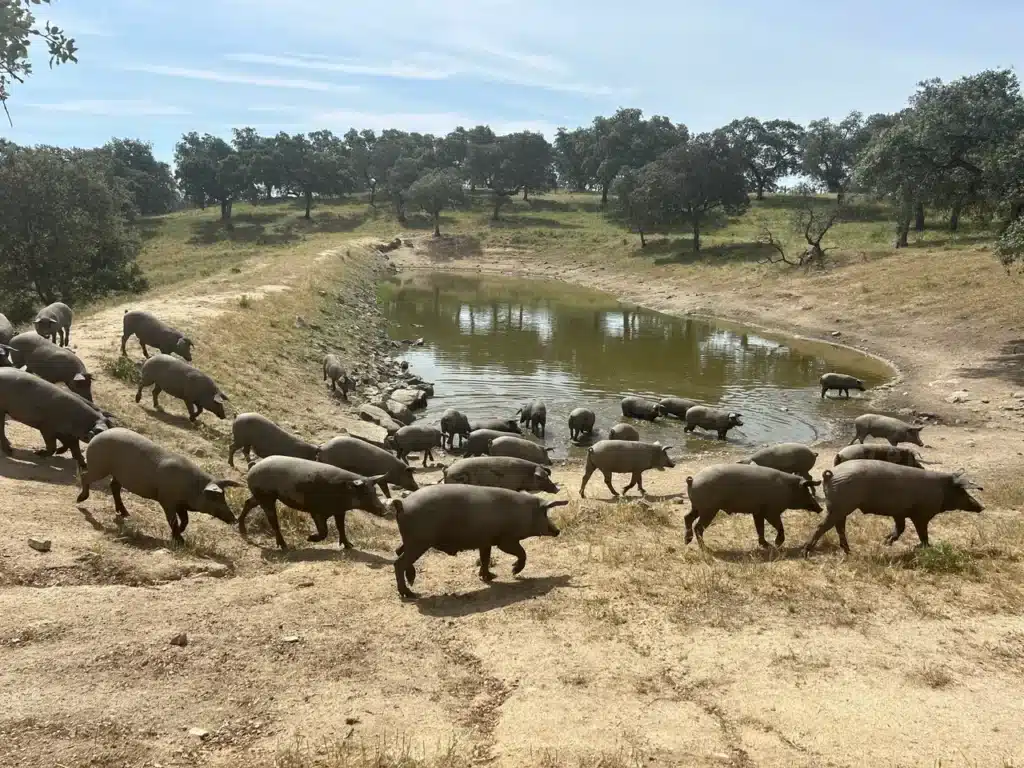
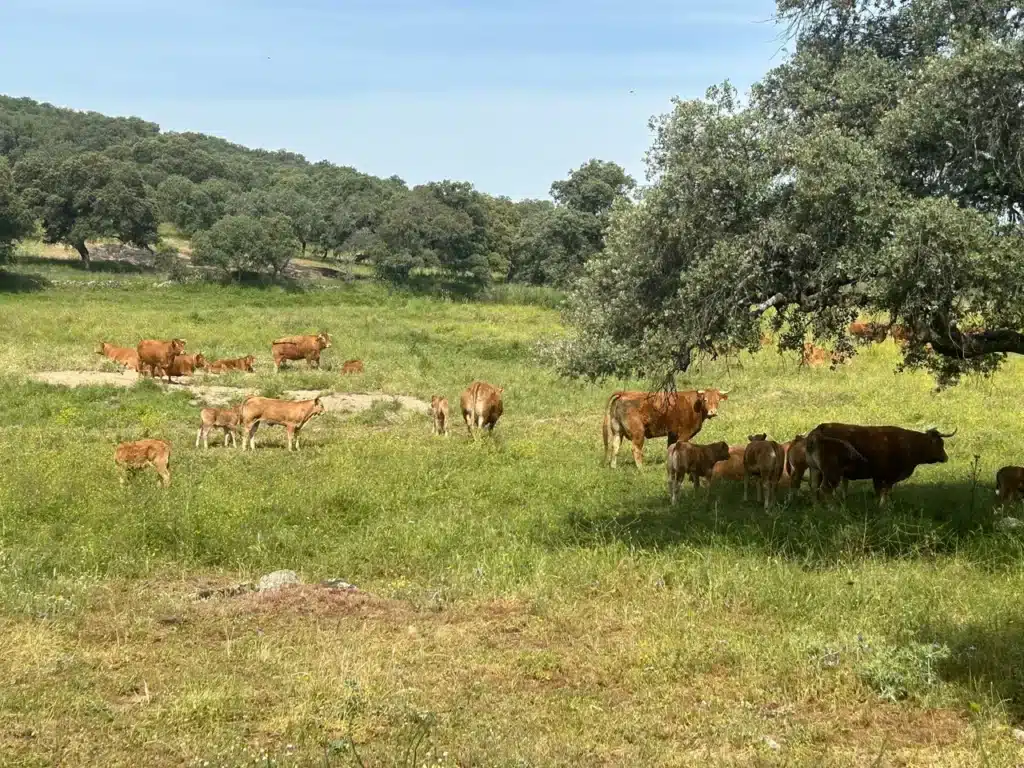
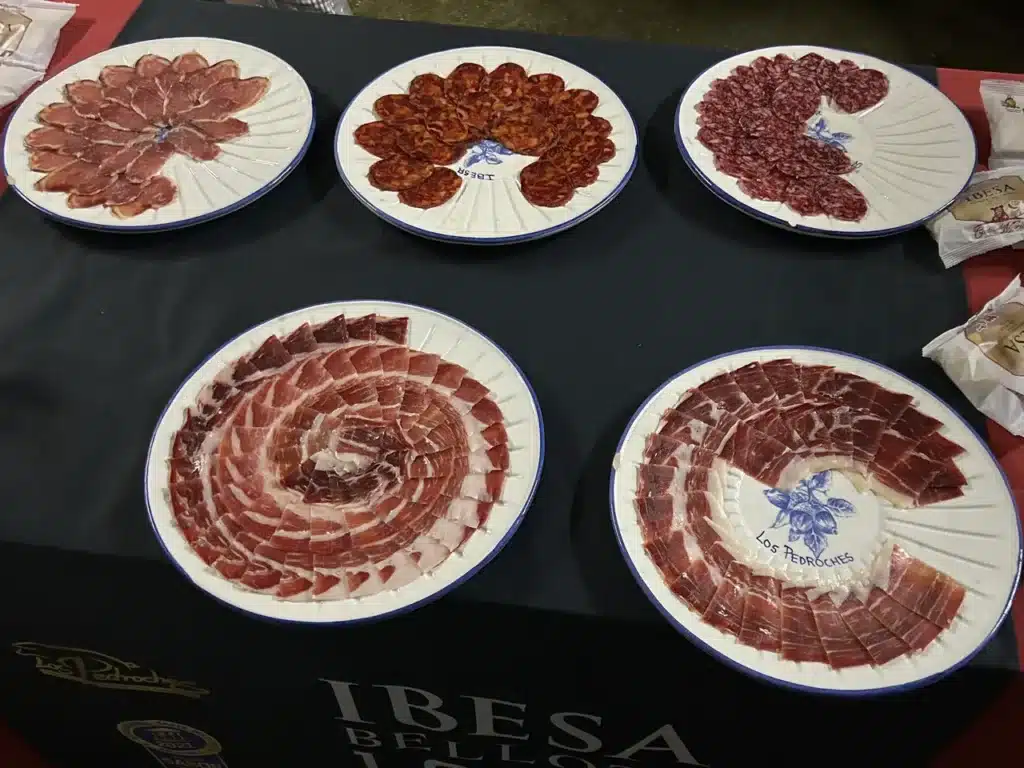
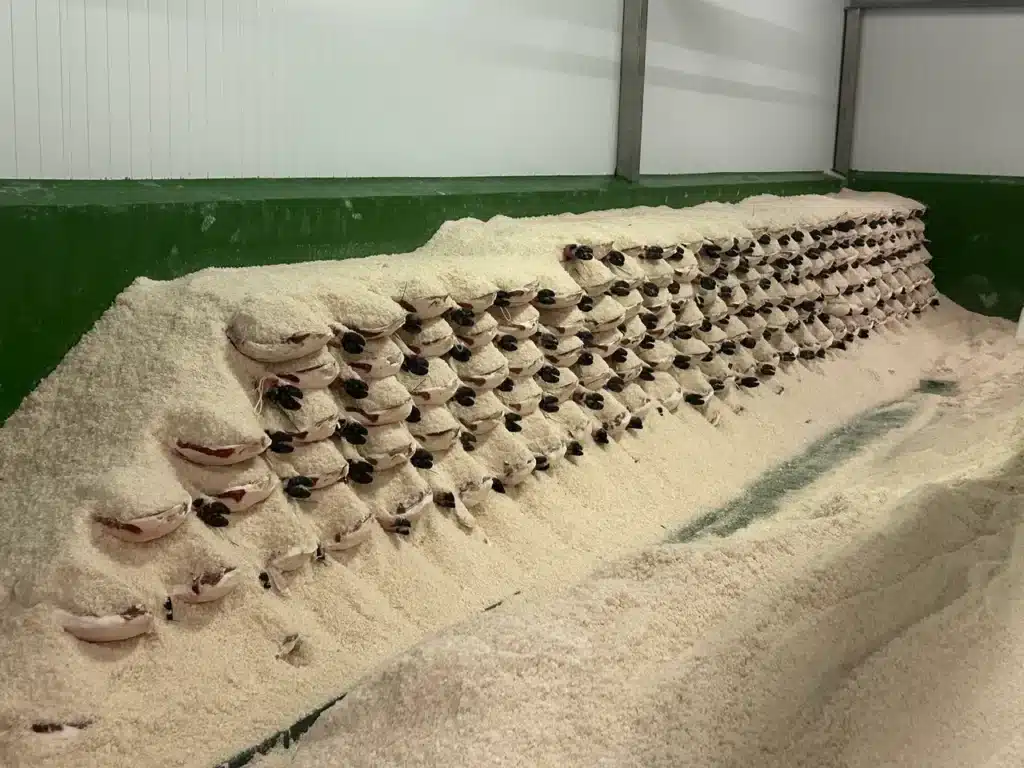
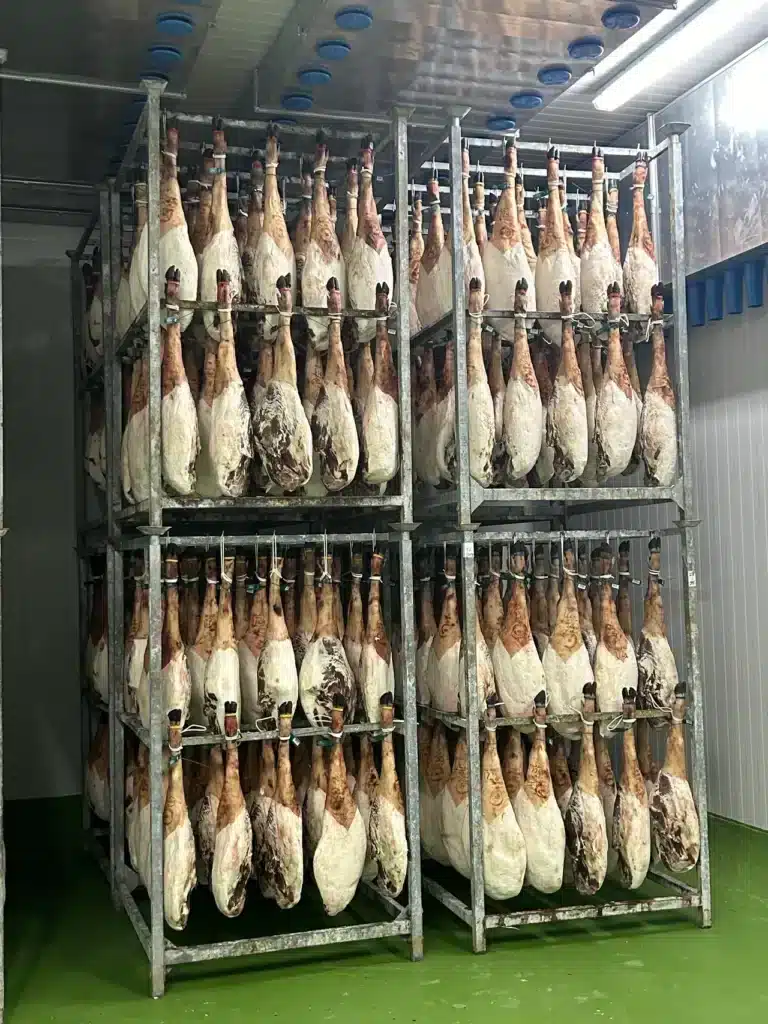
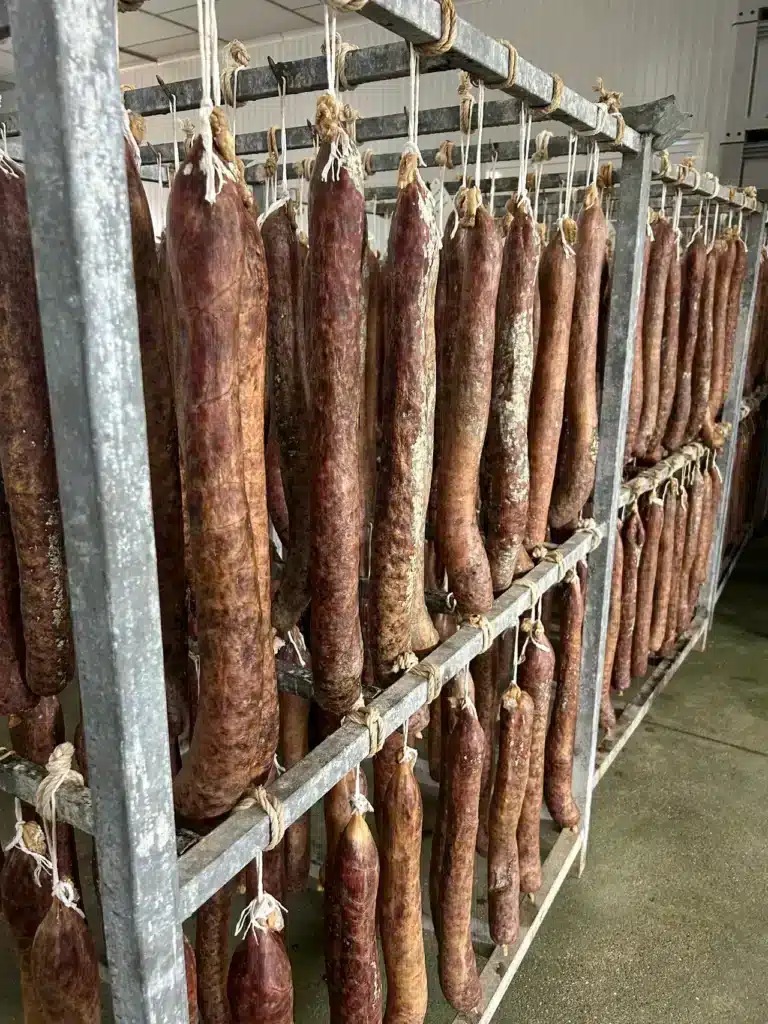
Back at the Ibesa factory the hams are first cured in salt for 1 day for each kilo of weight. After salt curing, they are put in a temperature- and humidity-controlled room where they gradually raise the temperature and lower the humidity over the course of four months. At this point the hams are aged in cellar for between two and five years. The product that ends up on the plate is well worth the wait!
